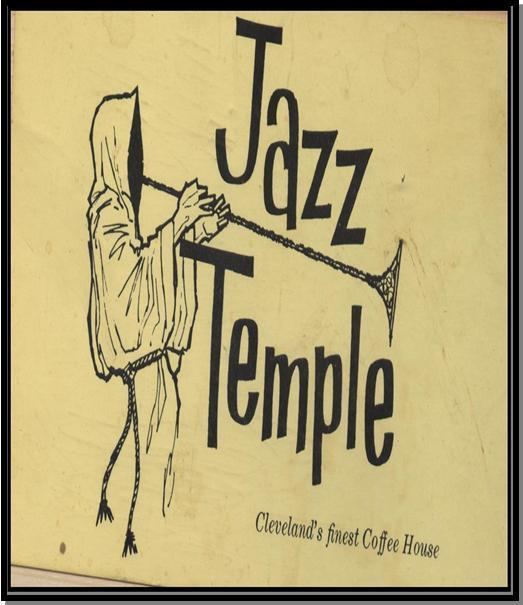 | ||
The Jazz Temple was a coffeehouse/nightclub located in the University Circle area of Cleveland, Ohio. The club’s name was chosen by the owner, Winston E. Willis, to symbolize a devout gathering place dedicated to the icons of the jazz world where these artists would be collectively enjoyed and appreciated. During its brief history, with frequent headlining appearances by jazz greats such as Miles Davis, John Coltrane, Herbie Hancock, Dizzy Gillespie, and Cannonball Adderley among others, the popular nightspot was more successful than any other similar venue in the region.
History
Opened in 1962, the Jazz Temple was the creation of 19-year-old Winston E. Willis, an African-American entrepreneur who was also a jazz enthusiast. Having operated several successful small businesses in nearby areas, he sensed that something was lacking in this upscale college community. After making a careful assessment and determining what was needed and what would be likely to work, he decided that "high quality jazz performances at a student-friendly and affordable price" was the answer. Then, quickly putting his idea into action, he secured a lease on a vacated building, a former Packard showroom, and immediately began remodeling, with careful attention devoted to acoustics. Shortly thereafter, the club opened to sensational success.
The liquor-less establishment thatich seated approximately 450 people was situated on a triangular lot on Mayfield Road near the ethnic enclave known as Murray Hill, Little Italy and adjacent to Western Reserve University. With surrounding institutional neighbors such as the Cleveland Museum of Art, Severance Hall (home of the Cleveland Orchestra) and University Hospitals in the city’s so-called "cultural oasis", the Jazz Temple was a noteworthy, if incongruous success.
The club offered casual dining, "the best burgers in town, using only freshly ground prime beef, the finest coffee available, and live jazz every night." It has been described as "the ultimate 'beatnik' club". The owner booked world famous artists from the world of jazz, and up-and-coming comics. Frequently, word-of-mouth brought visits from other well-known public figures, as when Malcolm X was welcomed and seated one evening. On another occasion, Dr. Martin Luther King, Jr. was among the members of the large crowd attending a Dizzy Gillespie performance. During that time, the student body of Western Reserve University was predominately white, and these students and others from surrounding universities accounted for 80% of the club’s clientele. But as is typical of jazz establishments, there was a noticeable amount of race mixing and many interracial couples in attendance each night. Individuals who managed to navigate the social inequities of the time and gather in a communal appreciation of jazz.
As the club’s notoriety grew throughout the county and State, it came to be known by many world famous jazz musicians as "The Jazz Mecca". But the interracial dating and race-mixing triggered widespread resentment in the racially polarized community. Soon the attempted intimidation by law enforcement began. Some nights saw as many Cleveland police officers in attendance as regular customers. These visits were routinely followed by unscheduled and unannounced inspections and citations. Thereafter, months of ominous threats of violence and anonymous phone calls during and after business hours foretold of the coming end. Several famous acts appearing at the club refused to be intimidated initially, insisting on performing. Finally, the frequency and intensity of the threats were followed by a tremendous after-hours explosion in August 1963 that demolished the Jazz Temple and ended its reign as the jazz mecca.
